The Wrinkled Peach Mushroom (Rhodotus palmatus)
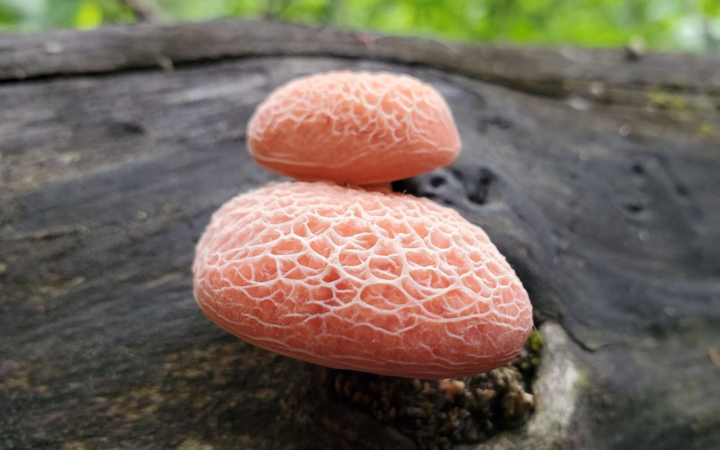
Ever have something happen that’s is so serendipitous, it’s hard to believe it’s all a coincidence?
The other morning, Tegan showed me a picture of a rare, but super cool mushroom she’d posted on Instagram.
It’s hard to believe, but it’s a species I’d never seen before.
In fact, I didn’t even know it existed.
Amazingly, later that night I was walking down a trail with the dogs… and BOOM there it was.
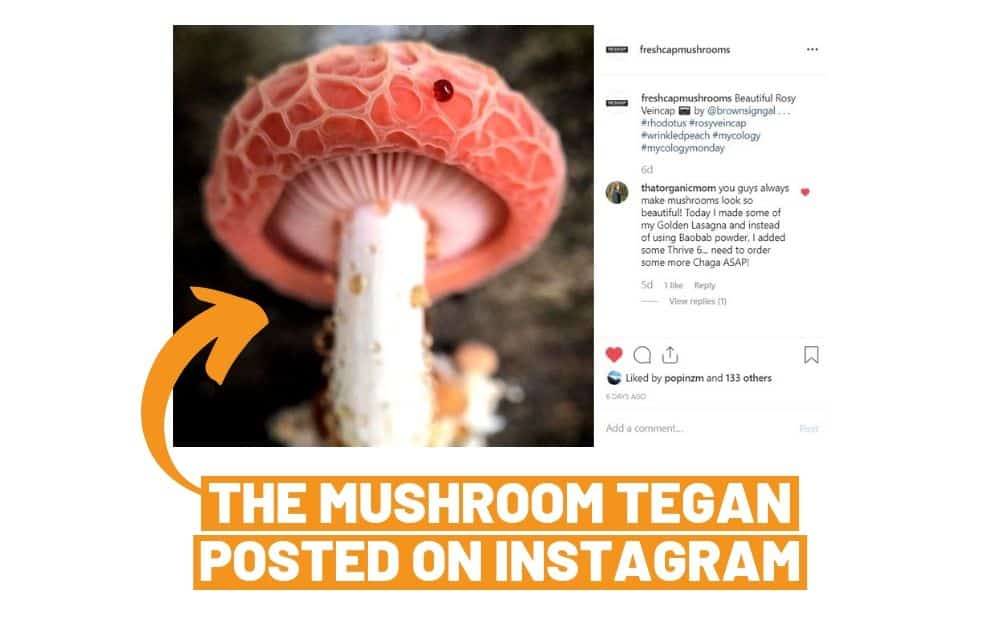
I couldn’t believe my luck!
The mushroom gods had just delivered me a sighting of the “wrinkled peach” a small, rare, and beautiful mushroom on the bucket list of many a mycophile.
What is The Wrinkled Peach?
Wrinkled peach is the common name for an uncommon species, Rhodotus palmatus. Other common names include rosy vein cap or netted rhodotus.
It’s widely distributed, and grows all over the world- although actual fruitings are sparse. It is pretty rare to actually spot one.
R. palmatus is a monotypic species, which means it is the only species in it’s genus. In other words, it’s characteristics are so unique that taxonomists had a heck of a time fitting it into any other group… so they had to come up with a whole new genus.
Identifying Rhodotus Palmatus
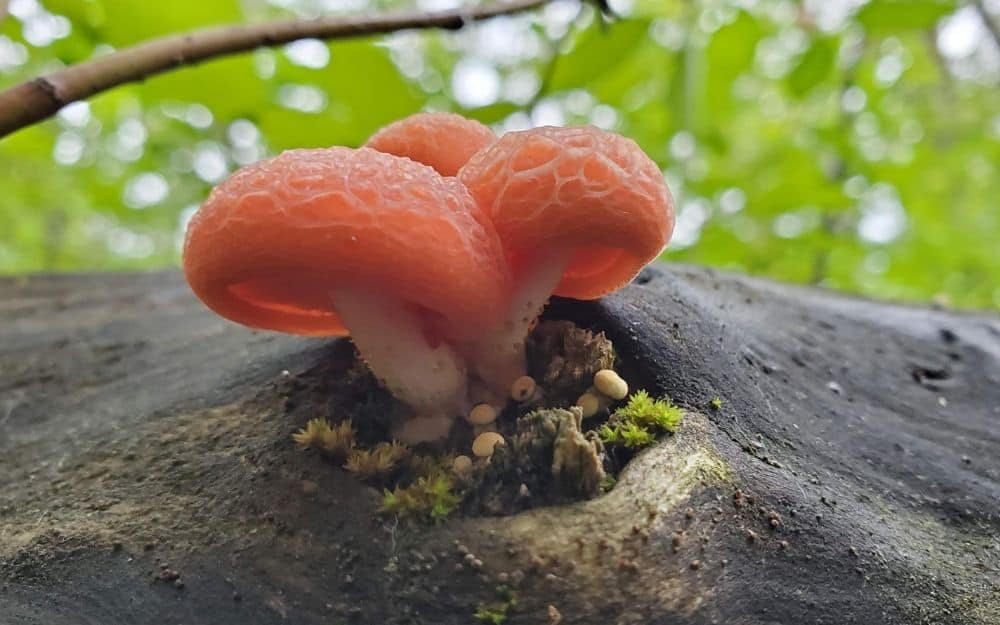
What does it look like?
The fruitbody really does look like a wrinkled peach, with large folds covering the top of the cap, and becoming more pronounced at the margins. In the mycologist-speak, this wrinkled network characteristic is known as “reticulate.” These wrinkles will get less pronounce as the mushroom matures.
The cap can be pink, peach or even pinkish cream colored.
The stem is white, and does not include a ring.
The mushroom can fruit singly, or in clusters and the cap can vary in size from 2 to about 6 cms.
The gills are white/pink/cream, and have “adnate” attachment to the stem. The spore print can be white to pink.
Rhodotus doesn’t have any distinct smell to my nose- but some people report that it has an unbearably bad smell. It’s possible that this is a case where some people are genetically pre-disposed to detecting a smell, and others aren’t. I’m not really sure, but if this mushroom has a stank to you- please let me know!
The cap is incredibly rubbery- almost feels like a human ear. Tearing it in half with your fingers is pretty much impossible.
Where does it grow?
Rhodotus is a saprobic mushroom, meaning it feeds of dead organic matter, specifically fallen hardwood logs.
It has a “circumboreal” distribution, and can be found in North America, Europe, North Africa, as well as Asia. Basically, you can find it all around the world, but certainly not everywhere.
It is most likely to fruit during cooler temperatures after long periods of rainy weather.
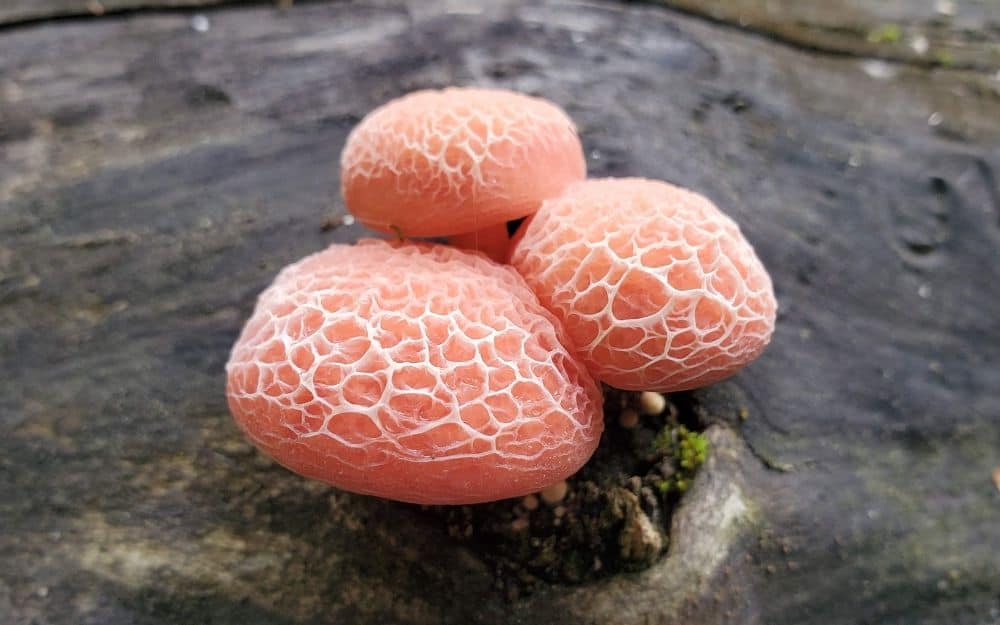
Is it edible?
Edibility: unknown.
Although not specifically reported as posoinous, I can’t think of any reason why you’d want to eat it. It’s rubbery, usually small, and apparently not all that tasty according to the brave few that have tried.
There are many other delicious mushrooms that will be way easier to find, and much more pleasing to your palate.
How rare is it?
This is a bucket list mushroom for many mycophiles.
Although it grows all over the world, actual fruitings are indeed rare in most places. That being said, some areas report this mushroom to be relatively common.
In some countries, picking Rhodotus is actually illegal, as it has been listed on the fungal; “red lists” of some European countries.
There really is no good reason to pick it anyways.
This mushroom is best enjoyed by your camera- trust me, you’ll get a lot of likes!
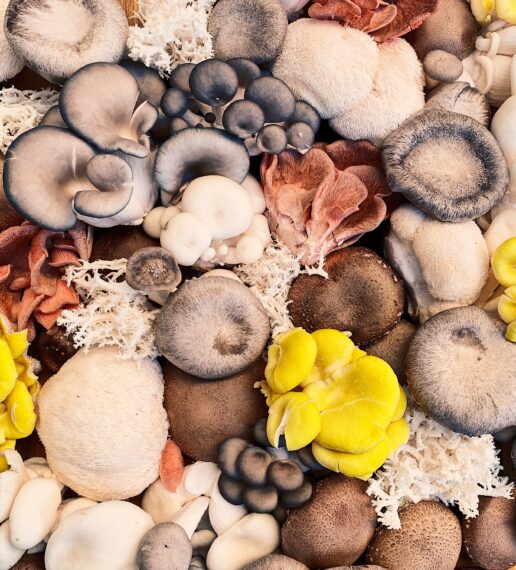

The wrinkled peach! Saw this outside of Springfield Missouri and couldn’t for the life of me find it anywhere. Was looking up some different info on cultivation and came across the piece on it. One of the coolest mushrooms I have ever seen!!!
It is totally cool! One of my favorite finds of all time 🙂
How does the wrinkled peach reproduce?
Not sure exactly the life cycle, but it would be similar to other saprophytic mushrooms, ie. spores-mycelium-pinning-fruit-spores…
This autumn I found a few of them and got it isolated on agar. It grew relatively well and it was funny to see that it readily produced primordia with its characteristic droplets. Now I made a batch of grain and it starts to produce primordia and yellowish droplets again. Happy to send you some pics if you wish. I wonder what the function of droplets is, perhaps it attracts flies whose larvae will help in dispersion later on. Any thoughts? Greetings from Madrid
I think I’ve found one! To me, it stinks! To my surprise, wife said: “Just smells like a mushroom to me.”
Here is a photo, which does not do it justice.
why would you want to eat it? obviously because it looks delicious! that honey-like drip, the ethereal cap- and sure it may be rubbery and small and stinky, but still, as hank green would say,
me want eat!
how does rhodotus palmatus reproduce?